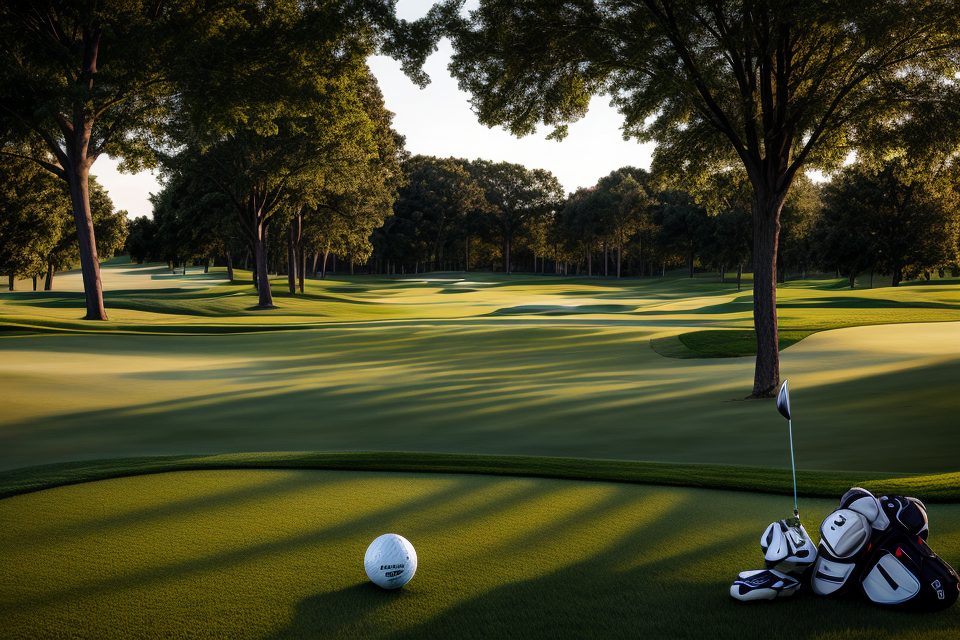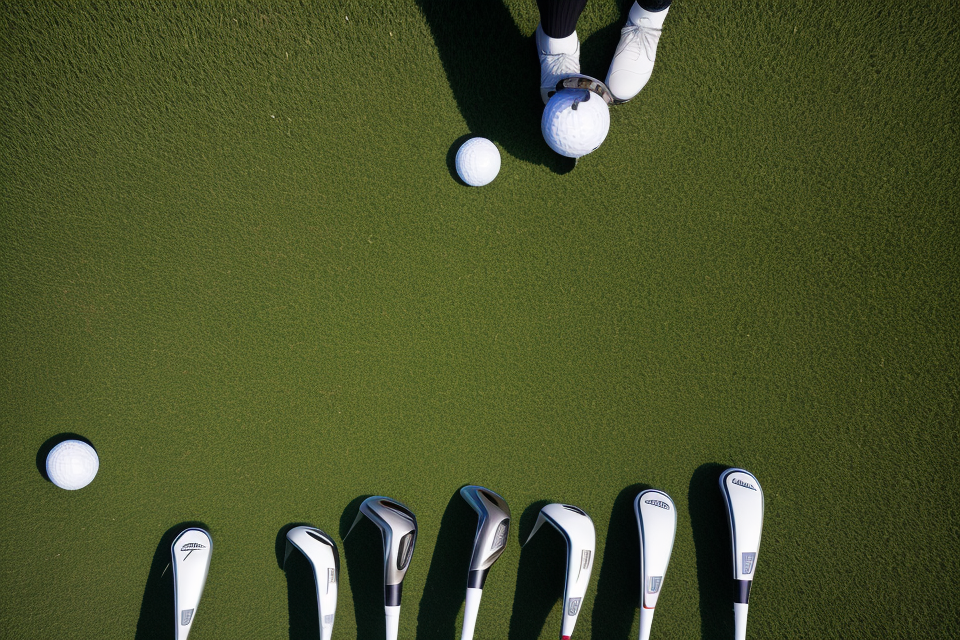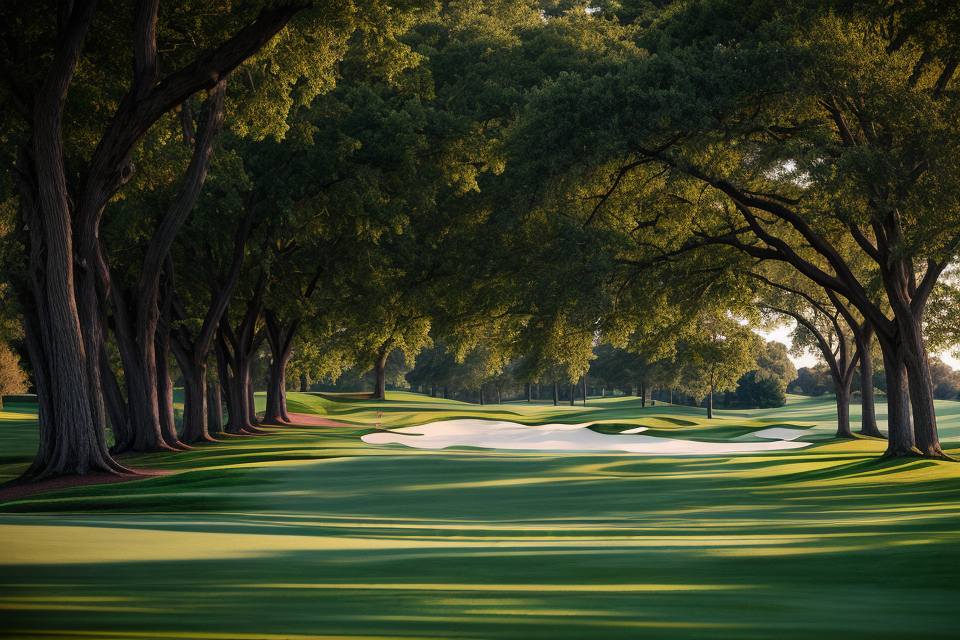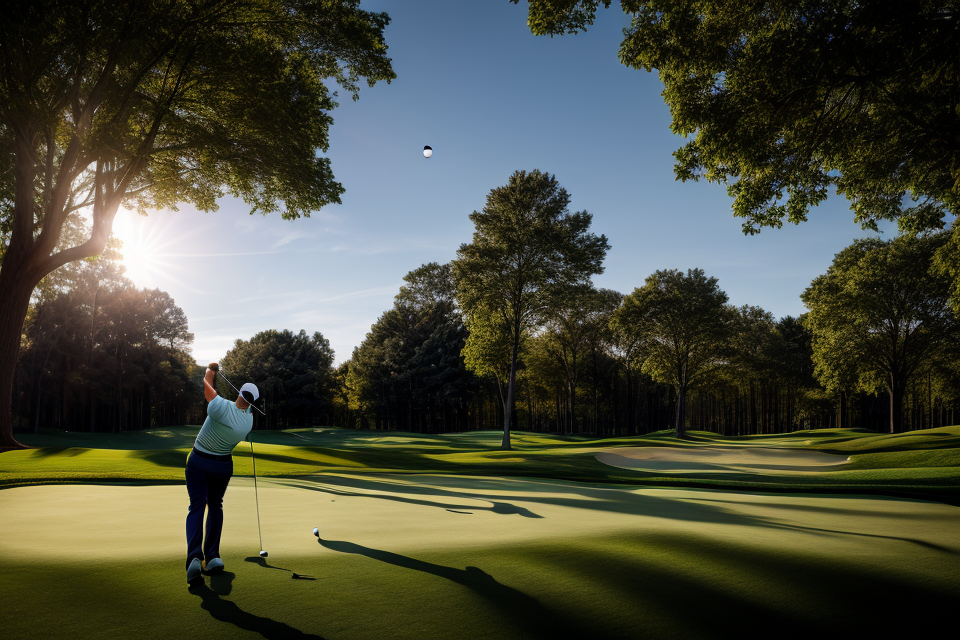
Golf is a sport that requires precision and skill, and choosing the right golf clubs is crucial to achieving success on the course. With so many different types of golf clubs available, it can be overwhelming to decide which ones are right for your game. In this ultimate guide, we will explore the key factors to consider when choosing golf clubs, including your playing style, swing speed, and the course conditions. Whether you’re a beginner or an experienced golfer, this guide will provide you with the knowledge you need to make informed decisions about your equipment and improve your game. So, let’s get started and explore the world of golf clubs!
Understanding the Basics of Golf Clubs
The Different Types of Golf Clubs
When it comes to choosing the right golf clubs for your game, it’s important to understand the different types of clubs available. Here are the four main categories of golf clubs:
Woods
Woods are typically used for long-distance shots and are made from a wood or metal material. They are often used for tee shots and other long shots where distance is a key factor. There are several types of woods, including the driver, which is the most common, as well as the fairway wood, which is used for shots off the fairway, and the hybrid wood, which is a combination of an iron and a wood.
Irons
Irons are used for a variety of shots, including approach shots and shots from the fairway. They are made from a forged steel or cast iron material and are designed to provide more control and precision than woods. Irons come in a set of clubs, with each club having a different loft angle, which affects the height and distance of the shot.
Hybrids
Hybrids are a newer type of golf club that fall between woods and irons. They are designed to provide the distance and forgiveness of a wood, with the control and precision of an iron. Hybrids are often used as a replacement for long irons, which can be difficult to hit accurately.
Putters
Putters are used for hitting the ball into the hole from short distances. They are typically made from a heavier material, such as steel or tungsten, to provide a smooth, stable stroke. Putters come in a variety of styles, including the classic blade putter and the mallet putter, which has a larger head and a more forgiving design.
Understanding the different types of golf clubs is just the beginning of choosing the right clubs for your game. It’s important to consider your skill level, playing style, and the specific needs of your game when making your selection.
Factors to Consider When Choosing Golf Clubs
Your Playing Style
Swing Type
Your swing type is one of the most important factors to consider when choosing golf clubs. A golfer’s swing type can be categorized into three types:
- The steep angle of attack (AOA) swinger
- The shallow AOA swinger
- The sweeper
Each of these swing types requires different golf club characteristics to optimize the golfer’s performance. For example, a golfer with a steep AOA swing may benefit from using a driver with a lower loft and a golf ball with a lower spin rate, while a golfer with a shallow AOA swing may benefit from using a driver with a higher loft and a golf ball with a higher spin rate.
Ball Flight
Your ball flight is another important factor to consider when choosing golf clubs. A golfer’s ball flight can be categorized into three types:
- The hooker
- The slicer
- The pusher
Each of these ball flight types requires different golf club characteristics to optimize the golfer’s performance. For example, a golfer who slices the ball may benefit from using a driver with a higher loft and a golf ball with a higher spin rate, while a golfer who pushes the ball may benefit from using a driver with a lower loft and a golf ball with a lower spin rate.
Physical Abilities
Your physical abilities are also an important factor to consider when choosing golf clubs. Golfers with different physical abilities may require different golf club characteristics to optimize their performance. For example, a golfer with a slower swing speed may benefit from using a lighter golf clubhead and a golf ball with a lower compression rating, while a golfer with a faster swing speed may benefit from using a heavier golf clubhead and a golf ball with a higher compression rating.
Your Budget
When it comes to choosing the right golf clubs for your game, your budget is an essential factor to consider. Golf clubs can range in price from a few hundred dollars to several thousand dollars, and it’s important to set a budget before you start shopping. Here are some things to keep in mind when considering your budget for golf clubs:
- Affordability: While it’s important to invest in quality golf clubs, it’s also important to consider what you can afford. Set a budget and stick to it, so you don’t overspend and compromise on other areas of your game.
- Value for Money: Just because a set of golf clubs is expensive, it doesn’t necessarily mean it’s the best option for your game. Consider the value for money, and whether the extra cost is justified by the performance of the clubs.
- Investment: Golf clubs are an investment in your game, and it’s important to consider the long-term benefits of investing in quality clubs. While it may be tempting to opt for the cheapest option, investing in a higher-quality set of clubs can improve your game and save you money in the long run by reducing the need for costly repairs or replacements.
- Trade-offs: Be prepared to make trade-offs if necessary. If your budget is limited, you may need to compromise on certain features or brands. However, it’s important to prioritize the features that are most important to your game and stick to your budget.
By considering your budget, you can narrow down your options and find the best set of golf clubs for your game without overspending or compromising on quality.
The Course Conditions
When choosing the right golf clubs for your game, it’s important to consider the course conditions. The course conditions can greatly impact your game and the performance of your golf clubs. Here are some factors to consider:
- Course Length: The length of the course can affect the type of golf clubs you should use. If the course is shorter, you may want to use clubs with a lower loft to help you get more distance. If the course is longer, you may want to use clubs with a higher loft to help you get more accuracy.
- Course Design: The design of the course can also impact your choice of golf clubs. If the course has narrow fairways, you may want to use clubs that help you keep your shots straight. If the course has hazards or water features, you may want to use clubs that help you hit higher shots over obstacles.
- Course Condition: The condition of the course can also play a role in your choice of golf clubs. If the course has thick rough or hard-to-reach greens, you may want to use clubs that help you hit longer shots or clubs with a higher loft to help you get more height and control.
- Personal Skill Level: Your own skill level can also impact your choice of golf clubs. If you are a beginner, you may want to use clubs that are easier to hit and more forgiving. If you are an experienced golfer, you may want to use clubs that offer more control and precision.
By considering these factors, you can choose the right golf clubs for your game and enjoy a more successful and enjoyable round of golf.
The Brand and Quality of the Clubs
When choosing golf clubs, one of the most important factors to consider is the brand and quality of the clubs. The brand and quality of the clubs can greatly impact your performance on the golf course. Here are some key points to consider:
- Reputation: Look for brands that have a good reputation in the golf industry. This can be based on their history of producing high-quality clubs, their reputation among golfers, and their overall reputation in the market.
- Quality of Materials: Consider the quality of materials used in the clubs. The best clubs are made with high-quality materials that can withstand the demands of the game. Look for clubs that use materials such as titanium, steel, and graphite, which are known for their durability and performance.
- Design and Technology: Look for clubs that have innovative designs and advanced technology. This can include features such as adjustable lofts, variable face thickness, and aerodynamic shapes. These features can help improve your accuracy and distance on the course.
- Feel and Control: Golf clubs should feel comfortable in your hands and provide you with the control you need to hit the ball with precision. Consider trying out different clubs to see which ones feel the best to you.
- Warranty and Customer Service: A good brand will also offer a warranty on their clubs and provide excellent customer service. Look for brands that stand behind their products and are willing to work with you if you have any issues.
In summary, when choosing golf clubs, it’s important to consider the brand and quality of the clubs. Look for brands with a good reputation, high-quality materials, innovative designs, and excellent customer service. Try out different clubs to find the ones that feel the best to you and provide you with the control and performance you need on the course.
Selecting the Right Golf Clubs for Your Game
Steps to Follow
Step 1: Assess Your Game
- Analyze your current golf game, including your strengths and weaknesses.
- Identify your ball flight, distance, and accuracy.
- Consider the types of shots you struggle with, such as approach shots, chips, or putts.
Step 2: Determine Your Budget
- Establish a budget for your new golf clubs.
- Consider both the cost of the clubs and any additional expenses, such as shipping, taxes, or club fitting fees.
- Prioritize your spending on the clubs that will have the most significant impact on your game.
Step 3: Consider the Course Conditions
- Research the courses you typically play and their specific conditions.
- Take into account factors such as course length, hazards, and green complexity.
- Choose clubs that will perform well on the courses you play most often.
Step 4: Evaluate Your Physical Abilities
- Assess your physical capabilities, including your strength, flexibility, and swing speed.
- Consider any physical limitations or injuries that may affect your golf swing.
- Choose clubs that are suitable for your physical abilities and swing style.
Step 5: Choose the Right Clubs for Your Swing and Ball Flight
- Identify the type of ball flight you currently have, such as high, low, or straight.
- Determine the optimal clubhead speed and shaft flex for your swing.
- Select clubs that complement your swing and ball flight, allowing you to achieve the desired results.
Maintaining and Caring for Your Golf Clubs
Proper Storage
Proper storage is crucial to maintaining the condition and longevity of your golf clubs. Improper storage can lead to damage to the shafts, clubheads, and grips, resulting in reduced performance and even rendering your clubs unusable. Here are some tips for proper storage:
Dry and Clean Storage
It is essential to store your golf clubs in a dry and clean environment. Moisture can lead to rust and corrosion, while dirt and debris can damage the clubheads and grips. Make sure to wipe down your clubs with a dry cloth after each use and store them in a dry, well-ventilated area.
Vertical Storage
Storing your golf clubs vertically is the best way to protect the shafts from bending or breaking. Vertical storage also helps to keep the grips clean and free from dirt and debris. If you do not have a golf club bag with built-in vertical dividers, you can use a golf club caddy or even a simple golf club bag with removable dividers to store your clubs vertically.
Avoid Overcrowding
Avoid overcrowding your golf clubs in the bag or caddy, as this can cause damage to the shafts and clubheads. Make sure there is enough space between each club to prevent scratches or dents.
Use a Golf Club Cover
Using a golf club cover is a great way to protect your clubs from scratches and dents during transportation. A cover can also help to keep your clubs clean and free from debris. Look for a cover that fits your clubs snugly and has a soft lining to prevent scratches.
By following these tips for proper storage, you can ensure that your golf clubs remain in excellent condition and continue to perform at their best for many rounds to come.
Cleaning and Maintenance
Aside from selecting the right golf clubs, maintaining and caring for them is also crucial to improve your game. One of the most important aspects of maintaining your golf clubs is cleaning and maintenance.
Here are some tips on how to clean and maintain your golf clubs:
- Clean your golf clubs after every use: This is important to remove any dirt, debris, or other substances that may have accumulated on your clubs during your game. Use a soft, dry cloth to wipe down your clubs, and avoid using water or other liquids that may damage the club’s finish.
- Use a golf club cleaner: If you want to make the cleaning process easier and more efficient, you can use a golf club cleaner. These cleaners are designed to remove dirt, grass, and other debris from your clubs quickly and easily.
- Clean the clubhead: In addition to cleaning the shaft and grip of your golf clubs, it’s also important to clean the clubhead. Use a soft brush to remove any dirt or debris that may have accumulated in the clubhead, and make sure to clean the clubface and grooves as well.
- Inspect your golf clubs: Before each use, inspect your golf clubs for any signs of damage or wear and tear. Check the grip, shaft, and clubhead for any cracks, dents, or other damage that may affect the performance of your clubs.
- Store your golf clubs properly: After each use, store your golf clubs in a dry, cool place. Avoid storing your clubs in areas with high humidity or extreme temperatures, as this can damage the clubs over time.
By following these tips, you can keep your golf clubs in good condition and ensure that they perform at their best throughout your game. Remember, maintaining your golf clubs is just as important as selecting the right ones, so make sure to give your clubs the care and attention they deserve.
Repairing and Replacing Clubs
Golf clubs are subject to wear and tear over time, and it is essential to know when to repair or replace them. Here are some guidelines to help you determine when it’s time to repair or replace your golf clubs:
Signs That Your Clubs Need Repair
- Loose or broken grips: A loose grip can affect your swing, and a broken one can be dangerous. Check your grips regularly and replace them if they are damaged or worn.
- Rust or corrosion: Rust and corrosion can affect the performance of your clubs, and it’s important to clean and oil them regularly to prevent this. If the damage is severe, you may need to replace the club.
- Cracks or damage to the shaft: If you notice any cracks or damage to the shaft, it’s important to have it repaired or replaced as soon as possible. A damaged shaft can affect the performance of your clubs and may even be dangerous to use.
Signs That Your Clubs Need to Be Replaced
- Obvious wear and tear: If your clubs look old and worn, it’s time to replace them. Over time, even the highest-quality clubs will wear down, and their performance will suffer as a result.
- Lack of distance or accuracy: If you’ve noticed that your clubs are not performing as well as they used to, it may be time to replace them. New clubs can provide a significant boost to your game, especially if you’ve been using the same clubs for a long time.
- Outdated technology: If you’re using clubs that are using outdated technology, it may be time to upgrade. Golf club technology is constantly evolving, and new clubs can offer improved performance and greater accuracy.
In conclusion, repairing and replacing golf clubs is an essential part of maintaining and caring for your equipment. By knowing when to repair and when to replace your clubs, you can ensure that you’re always using the best possible equipment for your game.
Improving Your Game with the Right Golf Clubs
How to Improve Your Swing
Improving your swing is an essential aspect of enhancing your golf game. It requires dedication, practice, and the right equipment. The following are some tips on how to improve your swing:
- Proper Posture: A correct posture is crucial for a powerful and accurate swing. Ensure that your spine is aligned and your shoulders are relaxed. Your knees should be slightly bent, and your weight should be evenly distributed on both feet.
- Grip: A firm grip on the golf club is necessary for control and power. Place your hands on the club, ensuring that your thumbs are positioned slightly downwards on the handle.
- Stance: Stand with your feet shoulder-width apart, with the balls of your feet facing forward. This stance allows for balance and stability during the swing.
- Swing Plane: The swing plane refers to the path that the clubhead travels during the swing. It is essential to maintain a consistent swing plane to ensure accuracy and power.
- Arc: The golf swing involves an arc-like motion, with the clubhead moving from the inside to the outside of your body. Maintaining this arc helps to ensure a smooth and powerful swing.
- Acceleration: As you swing the club, it is crucial to accelerate through the ball for maximum power. This acceleration should be maintained until the clubhead makes contact with the ball.
- Finish: After making contact with the ball, continue your swing and follow through to the finish. This follow-through helps to ensure that your body remains in sync with the swing and maintains balance.
By focusing on these aspects of your swing, you can improve your game and hit the ball with greater accuracy and power. Remember that practice is key, and the right golf clubs can make a significant difference in your performance.
Practice and Instruction
To improve your game, it’s not just about choosing the right golf clubs. You also need to practice and receive instruction. Here are some tips to help you do just that:
- Practice regularly: Consistent practice is key to improving your game. Make time to practice your swing, putting, and chipping regularly.
- Receive instruction from a professional: A golf professional can help you identify your strengths and weaknesses, and provide you with personalized advice on how to improve your game.
- Focus on your form: Good form is essential to hitting the ball accurately and powerfully. Make sure you keep your body in proper alignment, use the correct grip, and keep your swing smooth and controlled.
- Learn from your mistakes: Don’t be afraid to make mistakes on the course. Each mistake is an opportunity to learn and improve your game.
- Keep a record of your progress: Keep track of your scores and progress over time. This will help you identify patterns in your game and track your improvement.
By incorporating these tips into your practice routine, you’ll be well on your way to improving your game and choosing the right golf clubs for your needs.
Finding the Right Golf Clubs for Your Game
Selecting the appropriate golf clubs is crucial in improving your game. To find the right golf clubs, consider the following factors:
- Your Skill Level: The type of golf clubs you need depends on your skill level. Beginners may benefit from clubs with larger sweet spots and more forgiving designs, while advanced players may prefer clubs with more control and precision.
- Your Swing Type: Different golf clubs are designed for different swing types. For example, if you have a slow swing speed, you may benefit from clubs with a higher launch angle and lower spin rate. If you have a fast swing speed, you may prefer clubs with a lower launch angle and higher spin rate.
- Your Playing Style: Your playing style can also influence the type of golf clubs you should use. For example, if you prefer to hit the ball straight, you may want to use clubs with a straight-flying ball flight. If you prefer to shape shots, you may want to use clubs with a more fade or draw-favoring design.
- Your Budget: Golf clubs come in a wide range of prices, so it’s important to set a budget before purchasing. Consider how often you play and how seriously you take the game to determine how much you’re willing to spend.
By taking these factors into account, you can narrow down your options and find the right golf clubs for your game.
FAQs
1. What are the different types of golf clubs?
There are several types of golf clubs, including drivers, fairway woods, hybrids, irons, wedges, and putters. Each type of club is designed for a specific type of shot and has a different shape and size.
2. How many golf clubs should I carry in my bag?
The number of golf clubs you should carry in your bag depends on your skill level and the type of courses you play. Most golfers carry between 10 and 14 clubs, but some may carry as few as 6 or as many as 18.
3. How do I choose the right golf clubs for my game?
Choosing the right golf clubs for your game depends on several factors, including your skill level, swing speed, and physical characteristics. It’s important to get fitted for clubs by a professional to ensure that they are the right size and fit for you.
4. Can I use the same golf clubs as a professional golfer?
While it’s possible to use the same type of golf clubs as a professional golfer, it’s unlikely that you will be able to use the exact same clubs due to differences in size and fit. Additionally, professional golfers often use specialized equipment that is not available to the general public.
5. How often should I replace my golf clubs?
The lifespan of golf clubs varies depending on how often they are used and how well they are maintained. Generally, golf clubs should be replaced every 5-7 years, but this can vary depending on the type of club and the amount of use.
6. Can I use golf clubs from different manufacturers in the same bag?
Yes, you can use golf clubs from different manufacturers in the same bag, as long as they are the same type of club (e.g. driver, iron, etc.). However, it’s important to make sure that the clubs are compatible with each other and that you are comfortable using them.


